Interview with Thierry Mugler by Catherine Perret
Womanity the NEW Fragrance by Thierry Mugler: Excerpt of the interview with Thierry Mugler by Catherine Perret, Doctor of Philosophy, Senior Lecturer (Nanterre Paris X University, Copenhagen University, etc.)
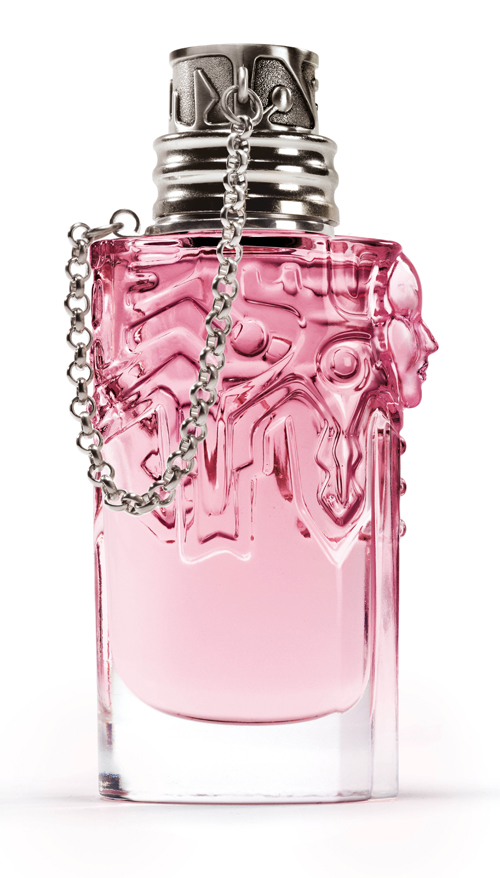
Concept and Womanity.com
Can you tell us how the Womanity story began…
A creation or a new fragrance always comes as a reaction and an improvement on my previous work. This is how I always work. When I develop a project, I’m already starting on the next one in a way… This one came after I had created Angel, which is quite a heady fragrance, with a certain innocence as well as an obvious sensuality. With Womanity, the aim was to complete this idea and reach out to even more women: to open to a broader range of femininity and therefore make something even more complete.
For Womanity, I began by thinking about women of today, filled with incredible energy, who are all go, always on the move. I thought about all this energy. It might be expressed in sport, with real technique – like Beyoncé, a diva born for the stage, who is well-trained and has every move down to a tee. You have to be a real athlete to do what she does. But I also thought about the energy generated and spent by women in their daily life. It’s an extraordinary energy that has always fascinated me. It’s the energy of women. The energy of having children, the energy of raising them, the energy of handling them, the energy of giving and, on top of all that, the energy of playing, looking good, having fun and living, with joy, frankness and honesty. In addition to being paradoxical and very complete, women are also playful. Playfulness, futilities that are far from futile in the end. For me, it is very important for women to be able to have fun and play, else they tread a dangerous line. Women have earned this right to play through much effort, courage and battles.
It was very important for you to launch Womanity in the form of a community platform. Where did the idea for Womanity.com come from?
It’s really the idea of communication and sharing. The idea of “I don’t do it for myself; I do it for them.” We want to involve as many women as possible. I think that women should define the framework of Womanity. By giving it a framework, the ideas will go much further… This is the concept behind Womanity.com: to give women a framework. And then, they will take us who knows where. That’s the idea. And it’s also the idea of the Womanity film that I made: there’s no end, the end will be written by the women, the web users. They are totally free to tell the rest of the story. And there’s this symbol of the key… Is it the key to dreams, wisdom, power? We don’t know, but it’s a key.
Inspiring women
Which women do you associate with what Womanity evokes? Are there artists or celebrities you would like to talk about in terms of Womanity, who might represent it in a way?
There are so many… each in their own way. There are contemporary women and women from the past who made a huge impact.
I could talk about Ingrid Bétancourt, or Beyoncé, that I’ve already worked with and who, for me, is the ultimate perfectionist when it comes to technique. From the age of 9, she had to learn all the techniques of singing, dancing, musicals, competitions, etc. And she keeps surpassing herself. When she gets up on stage, she goes all out. I also really like women who write their own music. I can mention Tracy Chapman, for example. She composes these wonderful peaceful melodies. Very stilling. Or Norah Jones. A soul, a very minimal expression, a voice. She really moves me.
Another person comes to mind when you touch on the struggle of women, their honesty and energy. It’s Martina Navratilova, an admirable athlete. I have practiced sport my whole life, so I have enormous respect for her, as she symbolizes discipline, rigor, commitment, questioning her choices. This ability is extraordinary in women, in their everyday lives. I can name Martina Navratilova for the combat that she led, for her frankness, without mentioning, of course, her excellent tennis skills. I’m also thinking about women who reinvent themselves. I have a lot of admiration and affection for Gloria Swanson, an amazing actress, who was one of the greatest stars in the world, a real idol. She was 60-years-old when she played in “Sunset Boulevard”, in which she mocked everything that her life had been. She had her own take on things when she acted. In the 20s or 30s, she managed to survive cancer on her own, when no one could do anything to help her. She used the very basic means of the times, like diet and sunlight and irradiated her cancer with the sun. She exposed herself in a very intimate way to the sun, as her cancer was very intimate. She made the decision to change her life, to get away from it all and spend six months in Arizona – and she treated and healed her cancer. I find this remarkable.
The Womanity film
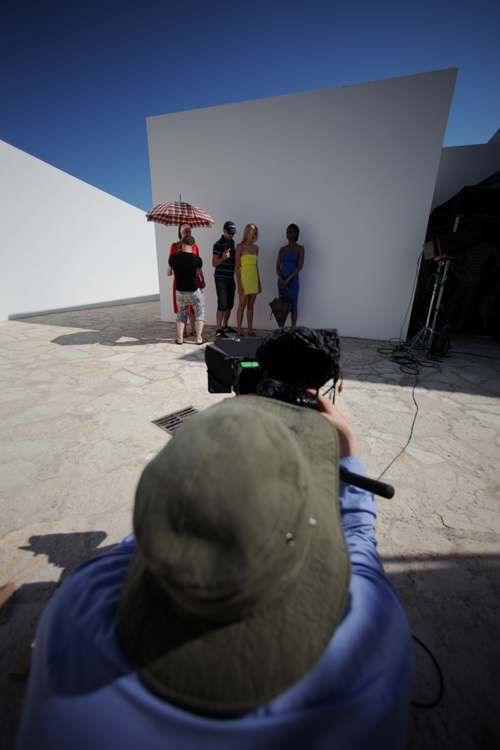
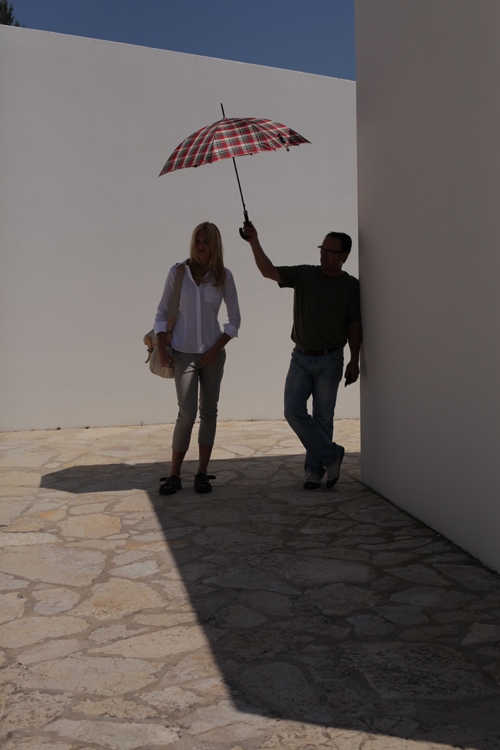
Can you tell us about the Womanity film, the wonderful film that you directed? It was shot at the Hartung Foundation in Antibes, a place of ultra-modernity… Surrealism is an important source of inspiration for you…
When we started thinking about Womanity, when I started talking about the desire I had to create something unexpected, dynamic and very complete all at once, I thought about surrealism. It is both very poetic and funny, and sometimes it’s just a simple makeshift creation. Full of charm, just round the corner…
The Womanity aesthetic is very close to surrealism, which I love and has always struck a chord with me, because it relates to everything I like: there are no real set codes, so you face the unexpected. It’s open. It’s emotion. And this is something that I love. When I discovered Dada, it seemed so clear to me. All of these things pushing each other away, repelling and unexpected, evoking sensations. In a world that is becoming more and more formatted, more and more trivialized, it is vital to find yourself confronted with the unsaid. The unsaid is very important.
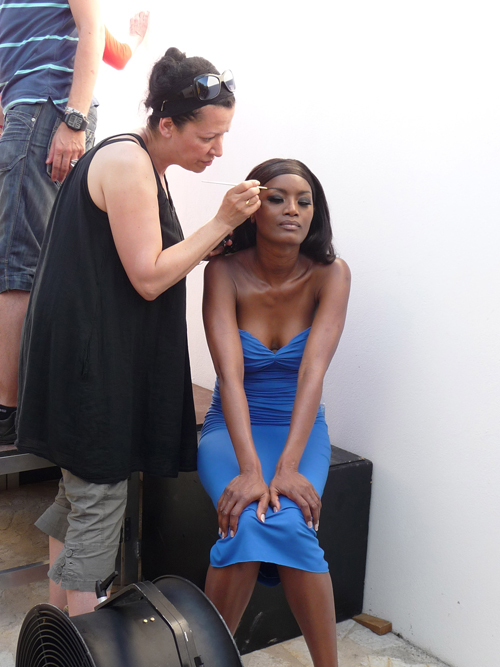
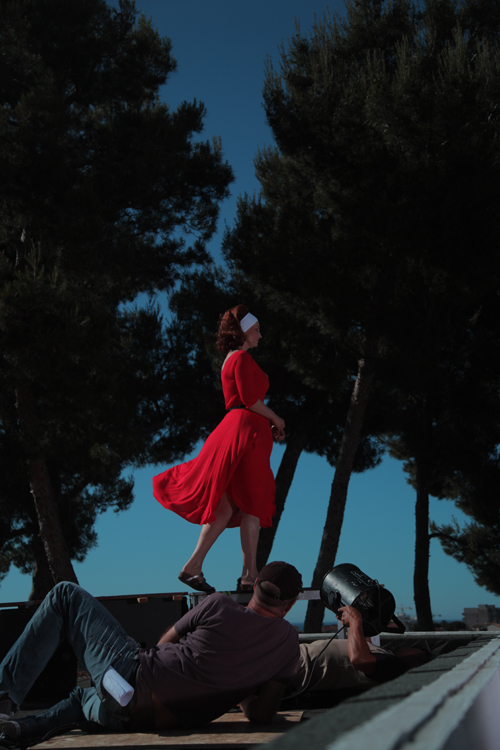
And, of course, I thought of Maya Deren. In fact, Maya Deren was a huge inspiration for this film, with her “fake amateur” photos and her “fake holiday” shots, which have a unique charm, poetry and story. The kind of music and logic between these pictures created a real world.
Maya Deren’s world was based on the idea of time, on how women experience time and use time to reinvent themselves. This sort of underlines the whole Womanity project. This impulsion that you are trying to artistically express via the fragrance and to communicate via the site… We might describe Womanity with this energy, which is absolutely free of prejudice and ready for anything, ready to take the most enormous risks with no preconceived idea of what will happen. Maybe this is the real strength of women.
Charm and the unexpected. And, especially, real joy. Because women have so many assets and, although it may sometimes be a source of suffering, they are very happy to be women and rightfully so.
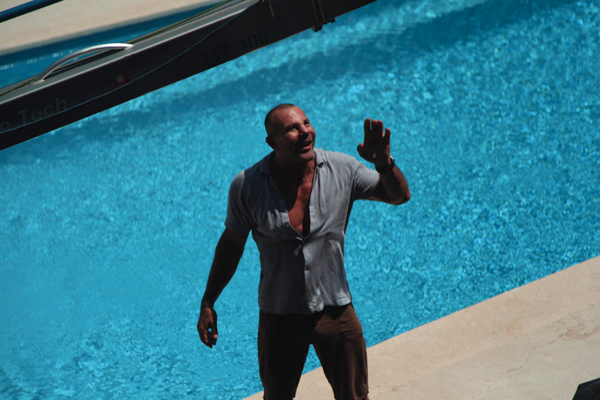
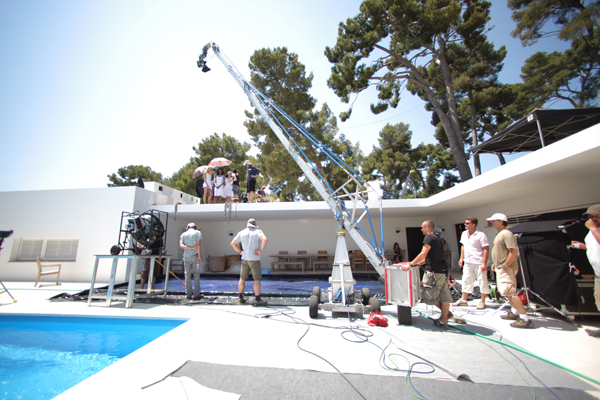
In the film Womanity, there are three women at three ages of life. Were you trying to represent every age of a woman’s life?
I focused more on the personalities than the ages. It’s true that some personalities correspond more to a certain age, but their personality interested me more than their age. I met three people. I loved the young woman, Ophélie, who was completely herself. She was uncomfortable and showed her discomfort, even during the shoot, she did not try to look pretty for the camera. I was struck by this aspect of her personality, it’s extremely powerful and very touching. I was also touched by Patricia, by her sensitivity, her radiance, her generosity. And, at the same time, I sensed a whole life’s experience with its share of suffering and a real sensitivity in her. And then, there was the third person who really summed up all three ages by herself: a teenager, a young woman and an adult woman. This was Margaret, who has this solar, bubbling, playful, flirty side, full of charm. I was won over by these aspects in each woman, although we met a great deal of women. There were different ages and different types. I was looking for an Asian woman. We were looking for different profiles but then we met these three women, who stood out from the rest.
We can feel this in the film; we feel that something is happening between these women when they talk to each other, something in their eyes… A sense that they belong to Womanity.
And do you know why it worked? Because this is the very idea of Womanity: this complicity, this kind of secret connivance. This is exactly how it worked. These three women are very different, from very different worlds. They didn’t know each other and, after looking each other over, they helped each other. And it happened like this, very simply, as we worked. The work was hard, because it was 40°C and we had been outside since 4 a.m. We had spent 16 to 18 hours under the blazing sun. The timetable didn’t really allow them to spend time together, but there had a curiosity about each other and they learned from each other. And this is the Womanity bond: it’s what one woman learns from another. It’s the idea of passing something on.
This really comes through in the film: there are signs that you placed here or there, more or less coded, more or less hidden. Sometimes they are objects, sometimes letters, sometimes words. We see these signs appear and we feel that there is a bond between these women. And this element of language is very important. How did you come up with all of this suspended symbolism?
It’s hard to explain. It happened naturally, on its own. I found links through nature, sounds, light and, of course, the setting, not to mention what was at my disposal, whether they were colors, the spirit of each woman, their style. There are links like this silver bubble, which is like a sphere of mercury, evoking a planet or the moon… For me, at any rate, it conjures up something infinite and timeless. Playing with the exterior and interior, with backlighting, with vertigo, playing with the transparency of the windows. It was also because of this magnificent site, the Hartung Foundation in Antibes, where you have planes of windows that are like completely unexpected works of art on the wall. With a serenity, a purity and essentiality… It’s a cubist house, one that is primary in the artistic sense of the term, made of primary colors and primary shapes, where you can build every emotion. I chose this site because of this, because it’s an excellent base that brings forth emotions without imposing any on you. It’s very important for me to be in a place that serves as a screen. An inspiring place that triggers something but imposes nothing. But on the other hand, there is a sort of rectitude, a direction, so that the emotions that are expressed are framed and can be taken farther.
In the scenes of the film, the move from one dimension to another is very interesting: there’s almost always a move from inside to outside, from before to after, from earth to sea. This change of dimension is very beautiful, because it evokes travel… We even see a boat…
This is why I really played with shots, shot reverse shots, high-angle shots, low-angle shots, point-of-view angles.
The Womanity fragrance
Can you tell us about the Womanity fragrance? How was it conceptualised and created?
The idea of Womanity was to bring about a mix of energy, tenderness, simplicity and sophistication and to evoke a feeling, feelings. For the first time, I wanted to use a savory note in a fragrance. With Angel, we introduced this luscious, mouth-watering aspect in perfumery and opened up a whole new olfactory orientation. Before then, there were green scents, orientals, florals, etc. And now there are gourmand scents, thanks to Angel. For me, femininity is very complete: it must be both sweet and savory. So we wanted to find a harmony with this savory note and make a dynamic accord with a sweet-and-savory rhythm. When it comes down to it, everything is based on rhythm. In everything I do, whether it’s making a garment, music, film or taking a photo, rhythm is the backbone that holds up the structure.
Can you describe the Womanity fragrance? I find that it’s a fragrance that evolves, that dances, that expresses itself at different moments. Can you describe these different fragrance moments?
It’s the Thierry Mugler trademark to create fragrances with three phases. This is very important to me. And it’s always very finely tuned in order to disclose certain notes that reveal themselves differently depending on the skin. This is also how Womanity plays out on the skin. It’s so interesting to have a fragrance with notes that unfold differently on each person. There is a slightly fresher note at the beginning, one that is also more tender and a little bit more sugary. It transforms into something cooler, this slightly savoury and strange note, and ends on a woody note, a telluric impression – while keeping the presence of the other two notes, of course. But these three notes play different roles, depending on what the person who is wearing the fragrance is doing, whether she is getting worked up or calming down. It’s a musical fragrance, a fragrance that plays its notes according to the emotions of the wearer. This aspect is extremely rich and fascinating.
Like Angel, this is a very paradoxical fragrance. It’s like femininity unraveling in ripples. Is this what you are trying to describe?
That is beautifully stated. Yes, that’s really it. That’s exactly what it is. This was the challenge, the “brief”, as we say in the trade. This is what we were working on with the perfumers and chemists. Of course, I first isolated all the essences and ingredients myself and pinpointed all the raw materials that really told the story of Womanity. And then the noses worked with extreme precision to give rhythm and musicality to all of the chosen notes.
When you isolate essences, do they correspond to actual stories?
It’s purely emotional. It’s true that there’s an image, a story, a given situation, a woman, a metaphoric woman, a precise woman behind them… And different types of women are revealed through all of these scents. When I have a certain type of woman in mind, there really is an essence that describes her better than another.
I would like to hear more about these contradictions in women that you talked about earlier. Because you have invented a number of images of women, in your opinion, what is changing in terms of the perceptions women have of themselves? Also, in terms of the need to invent a new fragrance for a new type of woman…?
I would say that, more and more, there is an urgency to assert oneself, an urge for recognition, for the inexplicable. I can’t explain it any better; it’s almost impossible to put a finger on it. It’s so subtle and so rich and indefinable… I simply want to enhance these paradoxes and this magic. These paradoxes are constant. There is a constant unexpected aspect: never planned and, more importantly, never what you think it will be.
The aspect of femininity that I want to emphasize today is this paradoxical side, this idea of “yes, everything is possible”. But, at the same time, recognizing that this power is made out of crystal. It’s the fragile strength of women.
It’s interesting to think back to the images linked to Angel and Mugler fashion, images of the vamp, the woman warrior, a sort of praying mantis, and then to see a totally different perception of femininity. Has your vision changed or do you feel that it’s reflecting today’s world?
I don’t think my vision has changed. You have in mind this conquering woman. But I’ve also always showed the opposite: a more silent, more virginal, more innocent woman. I’ve done it so many times, in fashion shows, where you have conquering armies and all of sudden, an adolescent girl carrying a sheaf of wheat.
The Womanity bottle
Now let’s talk about the very pure line of the fragrance. It has an extremely pure shape with this extraordinary statuary look… It’s like a sculpture.
That is a real compliment.
It is also reminiscent of a totem with symbols that are linked to the top of the bottle and this verticality… How did you design the bottle?
It’s true. The Womanity bottle evokes a totem or a statue, because it is designed for a woman who leaves her mark, like a woman who would have her statue made. I also created it to be a practical object. This is very important for me and for women in terms of their everyday lives. You know, I am very particular when I choose a pencil, a pen or an eraser. It has to be well made. So, imagine for a perfume bottle! It has to feel good in your hand. It has to be beautiful and be an entity in itself. I tried to make a real object using a rather classic base and with truly effective ergonomics.
However, the creation is far from classic: it’s the color of the fragrance within, which is pink…
Yes, pink with bronze, with a patina and a past. There’s a future in this bottle. There is definitely a future and a past. Just as there is a sweet side and a salty side in the composition of the fragrance. It’s vital for me to combine the sense of past experience and future possibility. I deliberately chose this delicate and somewhat obvious pink paired with bronze, to represent strength and resonance.
Thank you, Thierry Mugler, for this conversation.
And Long Live Womanity!
